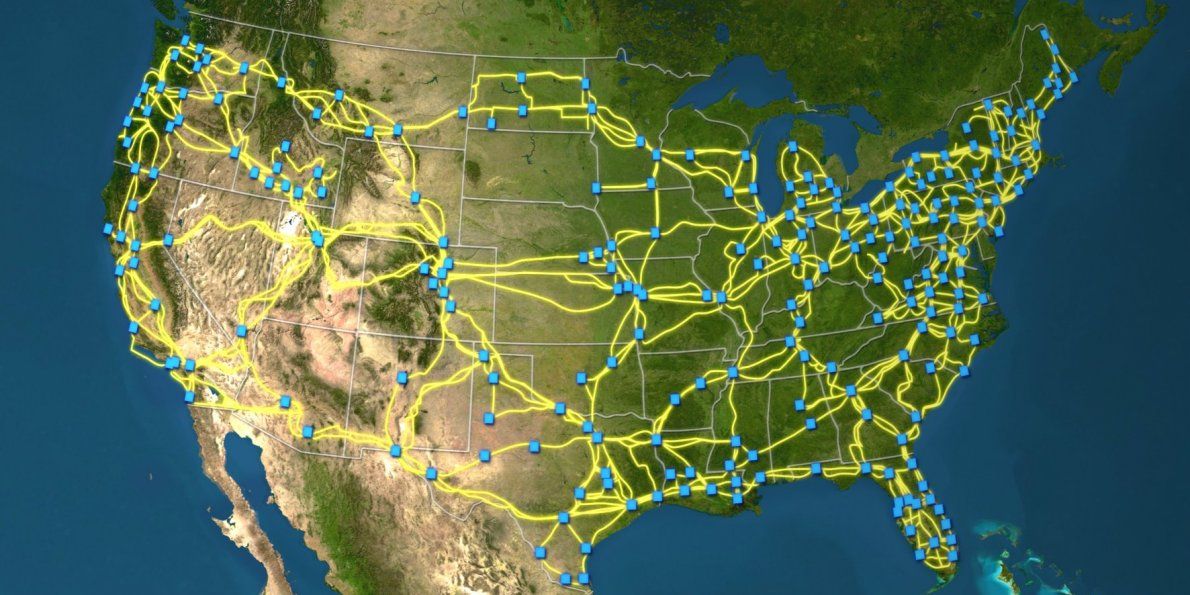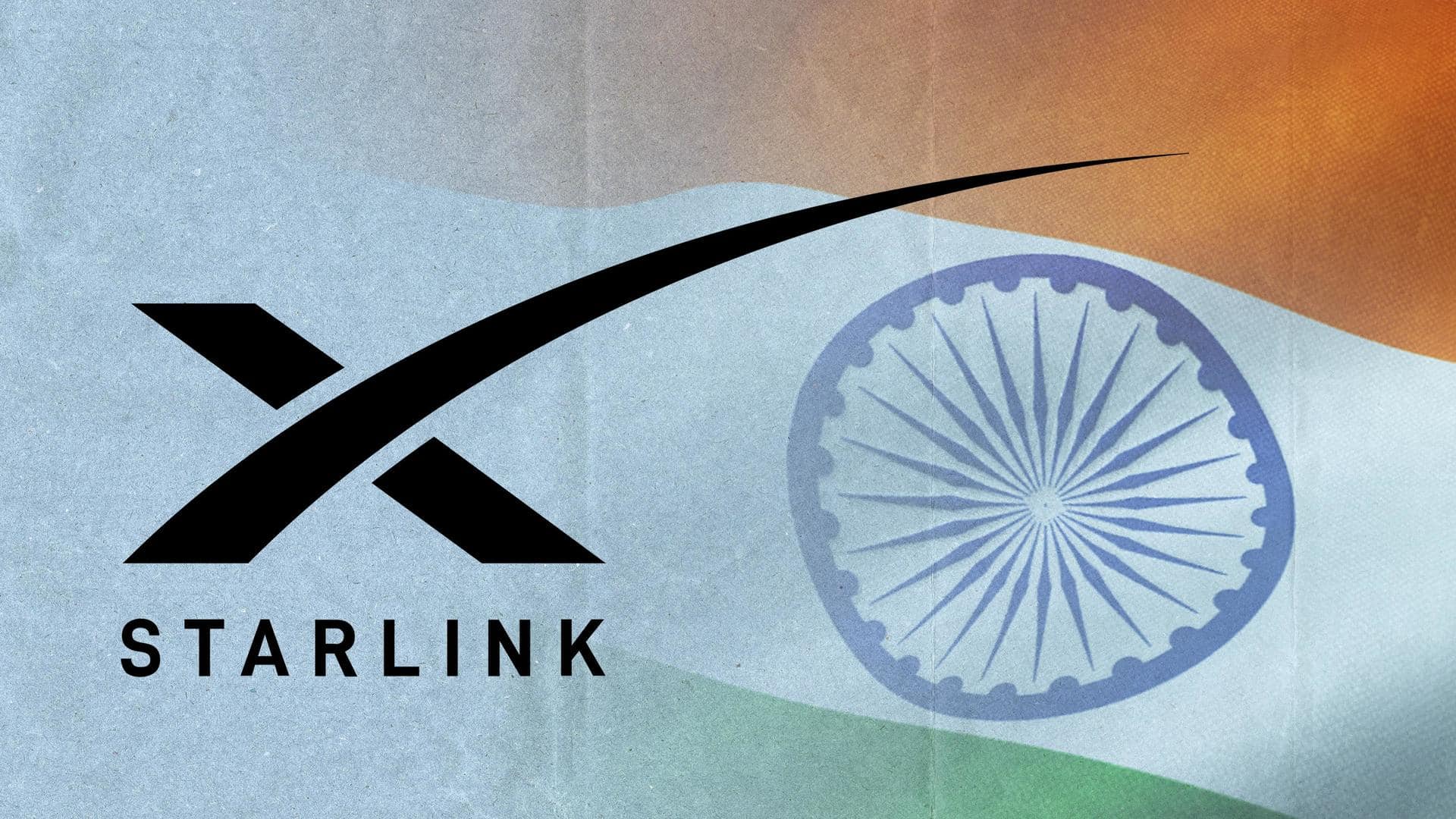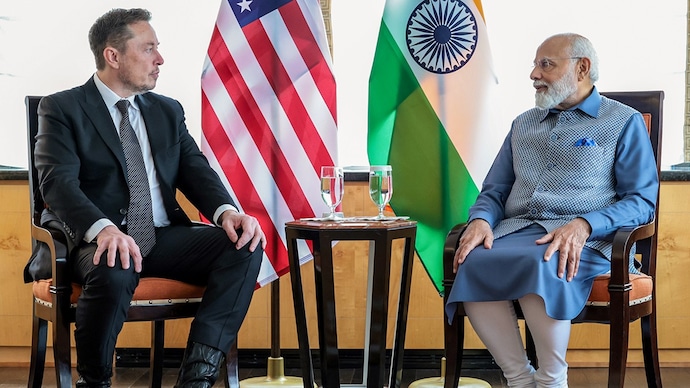Starlink, Fiber, And A $42 Billion Internet Showdown; Is the U.S. Betting On The Wrong Tech? How Starlink India Could Be A Game-Changer For Emerging Markets?

The U.S. government’s plan to connect every household to high-speed internet is taking a sharp turn, and not everyone is happy about it. For years, the U.S. government has wrestled with one big question – how to bring reliable, high-speed internet to every American household.
The Biden administration’s answer was clear – fiber-optic networks, a gold-standard technology known for speed, reliability, and long-term sustainability, even though it comes with high upfront costs. But now, the Trump administration is rewriting the playbook, shifting gears in a way that could reshape the country’s digital future.
Commerce Secretary Howard Lutnick is shaking up the $42 billion Broadband Equity and Access Deployment or BEAD Program, a federal subsidy initiative designed to bridge America’s digital divide. Under Biden, the program favored fiber-optic lines- expensive to install but durable and capable of handling ever-growing internet demands for decades. But Lutnick wants a more “tech-neutral” approach, opening the door for satellite internet providers like Elon Musk’s Starlink to receive a bigger chunk of the funding.

A Win for Musk, A Concern for Consumers?
The shift toward satellite internet is the result of extensive lobbying by SpaceX and Republican support, including from Senate Commerce Committee Chairman Ted Cruz. Unlike fiber, satellite internet doesn’t require miles of underground cables. Instead, small terminals connect to satellites in orbit, making it quicker and easier to set up in remote areas. On paper, that sounds like a win for rural America.
But there’s a catch. Over time, satellite internet could end up costing consumers significantly more than fiber. Internal state data obtained suggests that satellite service costs 53% more over a 30-year period and requires twice as much maintenance.
Critics argue that while fiber comes with a high upfront price tag, it’s an investment that pays off in the long run, whereas satellites require constant upgrades, leading to higher costs for both consumers and taxpayers.
States Push Back Against the Satellite Shift
State broadband officials and former federal regulators aren’t convinced this shift is in the public’s best interest. Under Biden’s plan, satellite providers were only allowed to compete for federal funding in areas where laying fiber was prohibitively expensive, a threshold that states could set themselves.
For example, Louisiana is prepared to spend as much as $100,000 per location to ensure fiber connections reach the most remote areas. But Lutnick is now considering eliminating that state discretion, setting a national benchmark instead.
Critics say this move prioritizes lower initial costs over long-term benefits. If fiber is sidelined in favor of satellites, millions of Americans could be stuck with an internet service that’s slower, more expensive, and less reliable, especially during bad weather or high network congestion.
The idea that, let states choose the most cost-effective way to get people online without favoring one technology over another – sounds fair, right? Well, not everyone’s buying it.

Here is why?
Fiber-optic internet, which involves physically running cables to each home, is the gold standard for speed and reliability but it’s expensive – at least $1,500 per household, according to state broadband officials. In Texas, that number can soar to $10,000 per home, depending on location and infrastructure.
On the other hand, Elon Musk’s Starlink, part of SpaceX, offers a $600 satellite kit that gets users online almost instantly. That’s a fraction of fiber’s upfront cost. But here’s the problem – Starlink’s satellites need replacing every five years. Over three decades, satellite internet could cost a quarter-million households nearly $4 billion more than fiber. And for individual consumers? A whopping $15,600 more per household in the long run.
Who Really Wins With This Shift?
The biggest winner of this new policy shift? Starlink.
Currently, Starlink operates 7,000 satellites, while its closest competitor, OneWeb, has just 630. Amazon’s Project Kuiper is expected to join the race but has already faced rollout delays. According to The Wall Street Journal, under Biden’s current BEAD rules, Starlink is set to receive $4.1 billion. But if the new policy leans further toward satellite tech, that number could skyrocket to between $10 billion and $20 billion.
That’s a massive payday for Musk, and some officials aren’t happy about it.
Evan Feinman, who led the broadband program under Biden before leaving this month, didn’t hold back in his final email to colleagues. He warned that the Commerce Department was “on a collision course to stranding all or part of rural America with worse internet so that we can make the world’s richest man even richer.”
Beyond cost concerns, forcing states to prioritize satellites could also delay broadband rollouts by another 12 to 18 months. States like West Virginia and Missouri, which have already chosen fiber providers and planned budgets, may be forced back to square one.
Fiber vs. Starlink
Fiber internet is fast – really fast. With speeds of one gigabit per second for both uploads and downloads, it’s strong enough to handle multiple HD streams, large file transfers, and a dozen smart home devices – all at the same time, without buffering.
Starlink, on the other hand, offers 100 Mbps download and 20 Mbps upload speeds – just enough to meet the FCC’s modern broadband benchmark. It’s decent for streaming on a few devices and downloading quickly, but not quite in fiber’s league.
Why States Love Fiber
Beyond speed, fiber projects also boost local economies. Laying fiber requires local workers to install and maintain networks, creating jobs within communities. Satellite services, however, centralize growth in manufacturing hubs, benefiting big tech companies rather than local economies.
But satellite broadband advocates say the game is changing. More satellites are launching every year, and they argue fiber stays affordable only because of government subsidies – something satellite companies haven’t benefited from yet.

Starlink’s Bumpy Road to Federal Funding
Elon Musk’s Starlink applied for nearly $900 million in FCC subsidies years ago but got rejected – the FCC wasn’t convinced Starlink could actually deliver a network at the scale needed. Since then, Starlink has expanded, and Musk has big plans to grow it even further. Still, some officials question whether Starlink is being too ambitious about what it can actually achieve.
No one’s saying Starlink is bad tech or that satellite internet isn’t useful. But officials argue it’s not the best fit for large-scale rural broadband.
Some states, like Nevada, are using Amazon’s Project Kuiper to cover remote areas. But for most states, satellite is only a small part of the plan – fiber remains the preferred choice.
However, a recent report suggests that Starlink could provide cheaper broadband in many areas. They argue fiber spending shouldn’t go beyond $1,200 per location – double the price of a Starlink terminal at the time.
One of the report’s authors, Ellis Scherer, warns against wasteful fiber spending:
“Our biggest concern is that we don’t see egregious spending on fiber just for fiber’s sake.”
Some fiber projects have cost upwards of $75,000 per location, which critics say is way too much.
What About BEAD?
Arielle Roth, the Biden administration’s pick to lead the NTIA, is set for a confirmation hearing on March 27. She has publicly criticized the BEAD program and wants it to be more technology-neutral, a shift that could favor satellite providers like Starlink.
Meanwhile, states are stuck in limbo, waiting for Washington to finalize budgets before they can start building. Others are unsure whether to lock in infrastructure partners amid all the uncertainty.
The good news is there is still time to fine-tune the program without forcing states to prioritize satellites in places where it doesn’t make sense, says Evan Feinman, a former broadband program official.

Musk’s Starlink Eyes India, A Game-Changer for Emerging Markets?
Meanwhile, in India, Elon Musk’s Starlink is inching closer to regulatory approval and if it gets the green light, it could be a massive win, not just for India but for Starlink’s global expansion into other emerging markets. Analysts believe success in India could set the stage for millions of new subscribers every year.
Regulatory Roadblocks & Fierce Competition
However, Starlink is not home free yet. It still faces legal hurdles and stiff competition from players like Eutelsat and China’s SpaceSail, which is already making moves in Brazil, Malaysia, and Kazakhstan. Meanwhile, SpaceX has been vocal about U.S. regulations making it harder to compete against foreign rivals.
But landing in India could be a $25 billion jackpot, reshaping the country’s satellite broadband industry and creating a strong case for expansion into other developing nations.
If Starlink pulls this off, it’s more than just business, it is also a huge PR victory.
“This would show that Starlink can overcome challenges that most other satellite operators couldn’t,” said satcom specialist Davis Mathew Kuriakose. “For Starlink, India is both a credibility boost and a key test of its economic feasibility in emerging markets.”
Since 2022, Starlink has been stuck in a regulatory deadlock in India, unable to launch commercial operations due to debates over spectrum allocation.
The Battle with Indian Telecom Giants
Starlink’s entry hasn’t been smooth sailing; it faced resistance from Mukesh Ambani’s Reliance Jio and Sunil Mittal’s Bharti Airtel, who wanted satellite broadband spectrum to be auctioned, a move that would favor established telecom giants.
Starlink, on the other hand, pushed for administrative allocation, which would make it easier for newer players like itself to enter the market. After much back and forth, India decided in October to allocate the bandwidth, paving the way for Starlink’s possible entry.
In a surprise twist, Mukesh Ambani’s Jio and Sunil Mittal’s Airtel have inked separate deals with SpaceX to bring Starlink services to India. This unexpected partnership is being seen as a big hint that regulatory approvals might finally be on the way.
Falling Prices, Booming Market
Goldman Sachs predicts that LEO (low Earth orbit) broadband and mobile subscription fees will drop dramatically, from $148 per month in 2023 to just $16 by 2035. At the same time, the global satellite market is set to explode, growing from $15 billion today to over $108 billion by then.
Meanwhile, Quilty Space, a space-focused financial firm, expects Starlink to add 3 million subscribers globally in 2025, with 1 million coming from Asia, and India playing a major role.
“India will be the biggest contributor to Starlink’s Asia subscriber growth once authorized,” said Caleb Henry, director of research at Quilty Space.
The Battle for Market Share
While Starlink is making moves, pricing will be key. Experts say its success in India will depend on how it competes with local broadband players.
Three analysts believe Starlink may start at around $15 per month, just a notch above India’s basic broadband plans, which begin at about $12. With operations in over 120 markets, Starlink is used to navigating complex regulations, and India is no exception.
“There’s always going to be a segment willing to pay a premium for convenience,” said Vivek Prasad, principal analyst at Analysys Mason. “India is an aspirational market, and having a Starlink connection could be a status symbol.”

Did Modi’s Musk Meeting Clear the Path?
Interestingly, Starlink’s deals with Reliance and Airtel were signed just weeks after Prime Minister Narendra Modi met Elon Musk in Washington. Some analysts believe this meeting may have helped smooth things over with Indian regulators.
If Starlink gets the green light, it gains a major edge over any future competitors.
“India’s satellite internet market is just getting started, with a potential 700 million customers. This deal gives Starlink a seat at the table to shape how the industry evolves,” said a senior industry executive.
What It Means for India
The Indian government hasn’t officially commented yet, but the SatCom Industry Association India is welcoming Starlink’s arrival.
“This will create jobs in satellite operations, ground stations, equipment manufacturing, and rural broadband services. It will also boost Indian space startups by fostering global collaborations,” the industry body said.




